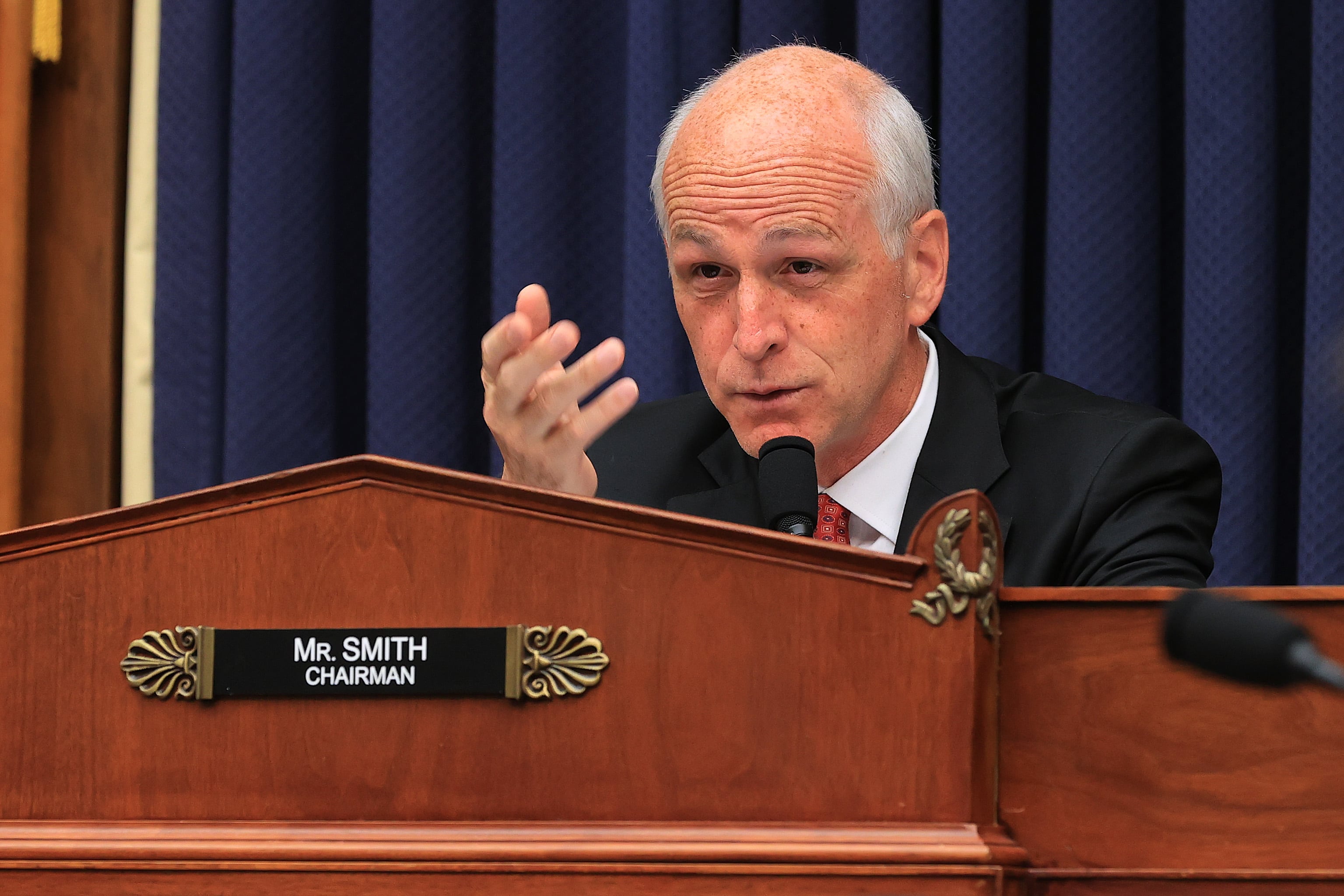WASHINGTON ― House Armed Services Committee Chairman Adam Smith on Tuesday criticized Lockheed Martin and other contractors over the F-35 Joint Strike Fighter and its exorbitant lifecycle costs.
“There’s no question that everyone involved ― certainly Lockheed Martin ― could be doing a better job on getting sustainment costs down,” Smith, D-Wash., told the Defense Writer’s Group. “The sustainment costs ― and it varies, I understand they’re as high as $38,000 an hour, and that is incredibly expensive ― it’ll make the plane so that you don’t really want to operate it any more than you absolutely have to.”
The comments are the latest volley at the F-35 program from Smith, who called the fighter a “rathole” in March. He has been pointing to the F-35′s costs and performance problems as a symbol of the Pentagon acquisition system’s shortcomings.
Air Force officials plan to complete a business-case analysis this summer to attack escalating sustainment costs, the service’s top uniformed acquisition official, Lt. Gen. Duke Richardson, said at a Senate hearing last week. In addition, the Air Force is negotiating a three-year sustainment contract with performance incentives, instead of the standard annual contract.
RELATED

Beyond cost, average repair times stood at 131 days a year ago because there wasn’t enough depot capacity, according to a GAO finding. Richardson touched on those issues last week, telling lawmakers that more repair depots need to be in place quickly.
“When it does break, it tends to stay down for a very long time, and that’s because we haven’t stood up the repair infrastructure,” Richardson said. “We should have gotten started on that, frankly, a lot sooner than we did. And so, that’s the part that we’re really attacking.”
Though F-35 sustainment costs have long been a hot topic, the issue took on new urgency after the GAO reported in April a difference of $3.7 million per aircraft between actual sustainment costs and what the services project they can afford over the program’s lifecycle ― and projected a total overrun of $4.4 billion by 2036.
To build pressure for cost reductions, Smith talked about threatening to mothball F-35s in favor of other platforms or somehow barring contractors linked to F-35 overruns from the emerging Next-Generation Air Dominance, or NGAD, program.
“The NGAD is a pretty good way to incentivize it: you know, if you screw us on this contract, then we ain’t giving you the next one,” Smith said. “There are a bunch of different ways to work it, but I want to be as creative as possible about incentivizing competition and incentivizing all of our contractors to give us the best deal possible.”
Lockheed says it has lowered its portion of the sustainment cost per flight hour by 44 percent since 2015 and that it expects to lower it another 40 percent over the next five years.
“We’re committed to working with our customers to bring F-35 sustainment costs down and improve overall aircraft capability, availability and affordability for our warfighters,” a company spokesperson said in a statement.
RELATED

Smith stopped short of bashing the F-35 entirely, calling it “an important platform,” and he didn’t say the problems were all Lockheed’s fault.
“It’s part of our future no matter what, but for it to be effective, we’ve got to get those costs under control, and we’ve got to find ways to incentivize ― and I know it’s not just Lockheed,” Smith told reporters.
“You’ve got a lot of subs that are involved with the software problems, and there are engine issues that we’re trying to get our arms around. So, you know there’s a lot of work to be done here, but we need to incentivize the entire operation to bring costs down, and also, by the way, to get us to the capability that we need.”
Work is afoot on new, more fuel-efficient engine technology meant for sixth-generation fighters that could be used in the F-35 to drive down costs, Smith said. Fully funding those upgrades and fielding them as soon as possible would be helpful, he added.
To inject more competition in defense acquisitions more broadly, Smith said he is considering language in the upcoming defense policy bill aimed at to ensuring the Defense Department can maintain intellectual property rights when it buys systems from defense contractors.
“It’s a freaking complicated thing to build an airplane, or to build anything that’s going to be in the middle of a firefight, and it’s not going to go seamlessly, and it’s not going to go on time and under budget every time,” Smith said. “However, we can do a hell of a lot better than we did in the last 20 years.”
Valerie Insinna and Rachel Cohen in Washington, D.C. contributed to this report.
Joe Gould was the senior Pentagon reporter for Defense News, covering the intersection of national security policy, politics and the defense industry. He had previously served as Congress reporter.





